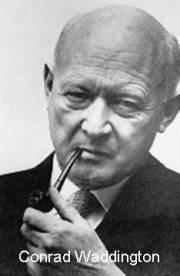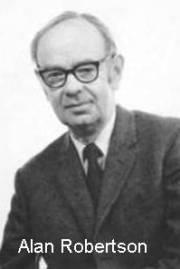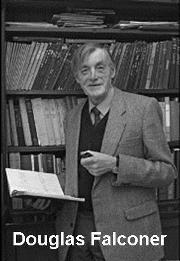History
Ashworth Laboratories first opened in the late 1920s, to house the University's Department of Zoology as well as the Natural History Museum.
In terms of departmental structure, several changes have occurred since that time - for example, the fusion of Genetics and Zoology to form the Institute of Cell, Animal, & Population Biology (ICAPB) was followed in 2004 by the split of ICAPB into the Institute of Evolutionary Biology (IEB) and the Institute of Immunology & Infection Research (IIIR).

However, research excellence has continued unabated through the years. Ashworth Laboratories saw the emergence of groundbreaking research into population biology and quantitative genetics, as well as in infectious disease research (which is carried forward today in both IIIR and IEB). Several Nobel prize winning researchers began their careers or spent time in Ashworth Labs or the Institute of Animal Genetics: Hermann J. Muller, Peter Mitchell, and Paul Nurse.
Historically, the former Institute of Animal Genetics and its successor in Ashworth, ICAPB, are world-famous for being home to some of the leading lights in quantitative genetics. A brief history of this area follows.
Genetics of complex traits: a brief history in Edinburgh
By Bill Hill FRS
Most phenotypic traits of interest in human health, animal and plant production or evolutionary biology are genetically complex; i.e. they are determined by multiple genes with a substantial environmental input. The Genetics of Complex Traits (GCT), or Quantitative Genetics, has been studied in Edinburgh since the 1940s, giving us a longstanding and continuing worldwide reputation in this area. Our 21st century GCT studies extend over natural, livestock, human and laboratory populations, and genome sequence and SNP databases offer new opportunities for identifying genes in many organisms.
Following the Second World War, the Agricultural Research Council saw the need to fund research on the genetic improvement of livestock, and established a research organisation at Edinburgh. Subsequently, two groups were established, one within the Institute of Animal Genetics of the University led by Conrad Hal Waddington, Buchanan Professor of Animal Genetics, and the Animal Breeding Research Organisation (ABRO) as the other. Among the University geneticists present or appointed in the 40s and 50s were Charlotte Auerbach, Geoffrey Beale, Douglas Falconer, Alan Robertson, Mary Lyon, Forbes Robertson, Eric Reeve, Jim Rendel, Alan Beatty, James Sang and Anne McLaren (of whom Waddington, Auerbach, Beale, Falconer, A. Robertson, Lyon and McLaren were all in due course elected FRS).

Both theoretical and experimental research in quantitative genetics relevant to livestock improvement was undertaken. This included predictions of the rates of improvement that could be achieved by using artificial selection and progeny testing in dairy cattle, experimental tests of quantitative genetics theory and measurement of long term responses in Drosophila and in mice, and evaluation of the effectiveness of selection on good vs. poor diets.
Much was fundamental to the development of complex trait analysis, for example on effects of inbreeding and of genotype x environment interaction, principles relevant to populations in the wild, to humans, and on the farm. More detail of the early days is given by Falconer (1993, Genetics 133:137).
From the outset it was realised that students from both Britain and abroad came with no training in population and quantitative genetics and that training would have to be provided. So a postgraduate Diploma in Animal Genetics was established in the 1950s, and stimulated Falconer’s well known book, 'Introduction to Quantitative Genetics', first published in 1960 and now in its fourth edition. Following numerous mutations, insertions, deletions and transpositions the course has evolved into the MSc in Quantitative Genetics and Genome Analysis that we currently teach.
Research in Edinburgh in quantitative genetics has likewise evolved over the decades, but remained strong, and important advances have been and continue to be made. Subject boundaries have become increasingly blurred, such that ideas developed here have had broad impact. For example statistical methods using the animal model developed for analysis of data on livestock are now used routinely in natural populations for which pedigrees have been obtained. The role of mutations in long term response to artificial selection and in maintenance of variation in natural populations have been evaluated both theoretically and experimentally, and ideas developed to assess the distribution of mutation effects on fitness.

Molecular markers provide the means to map loci (QTL) and genes that influence quantitative traits using techniques devised in Edinburgh and first applied to pigs and measures of linkage disequilibrium (LD) initially applied to populations of Drosophila. Evidence of selection at genomic regions generating evolutionary change utilise theory for predicting response to artificial selection. Increasingly the research in Edinburgh is on the genetics of natural rather than farmed populations, looking back as much as forward, but the principles are the same.
Current projects on the genetics of complex traits
Current projects in IEB span both theoretical and applied research in a wide variety of systems and include the following:
- Identification of genes determining complex traits in humans and model species
- Development of QTL mapping algorithms
- Genetics of disease in livestock and farmed fish
- Modelling genetic components of survival
- Genetic evaluation of livestock and sport horses
- What maintains the levels of genetic and environmental variance in complex traits?
- How is fitness determined in natural populations of wild mammals?
- How does resistance to combination antiretroviral therapy arise in HIV?

